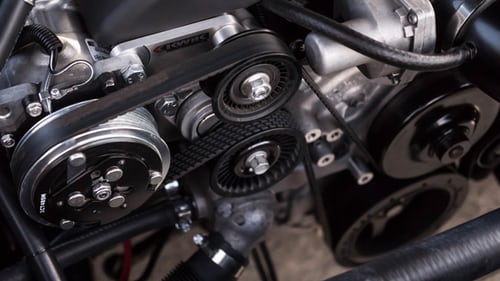5 key pieces of car maintenance that you can carry out on your driveway
With our cars taking a backseat in our lives recently and wallowing outside on the street waiting for the next trip to the shops, the annual MOT process has become that bit more stressful. Sure, you’ve not really used your car this last year, so what could go wrong with it? Well, the problem is you’ve not really used your car this last year, and that can mean plenty of things can go wrong with it.
As such, carrying out the odd bit of maintenance has become an important feature of keeping your car healthy through inactive periods. And while the concept of car mechanics might seem alien to you, there are actually a number of handy maintenance things that anyone can carry out easily on their car while it’s sat on the driveway – all of which will keep the chances of an MOT failure, and the associated costs, low.
Below, you’ll find five key pieces of car maintenance you can carry out to ensure your motor keeps ticking over. All beginner-friendly, all low cost and all highly useful when it comes to test time.
Tyres
Two very easy but very important things to check with tyres – pressure and wear. To check your tyre pressure, consult your owner’s handbook or search on Google for what your front and back tyre pressures should be, then whip your car down to the local petrol station where you’ll find an air machine that can tell you what your exactly what your current pressures are and fill them up to the correct level.
As for tyre wear, the legal tread amount for tyres on UK roads is 1.6mm, so you can start by checking that. Keep an eye out for bald spots on the tread or damage to the tyre wall. If any of these areas are substandard, it’s time to change your tyres. Naturally, you can get this done down at the garage, or you can use this guide from the RAC on how to change a tyre in ten simple steps.
Engine oil
An oil change is a fundamental maintenance process that you can either pay a small fortune for down at your local garage on do it on the cheap yourself. You might also find that the relative simplicity of the process makes it more convenient timewise for you to do it on your own.
Car and Driver offers a good breakdown on changing your car oil, walking you through every step of the process, from jacking your car up to checking your levels at the end.
Air filters
It’s essential that your air filter functions correctly, otherwise your car effectively won’t be able to breathe properly. The filter’s core purpose is to filter away all the air that’s taken in by the engine and prevent dust and debris from entering, as well as assisting the air intake system. If it’s not working as it should, your car might not run properly and might endure significant damage.
Head over to Sunday Times Driving for a filter change guide, and give your car that breath of fresh air it deserves.
Spark plugs
Spark plugs are essential to your engine’s function, and a very unnecessary but common repair cost in garages and MOT stations around the UK. Replacing your spark plugs is a fairly simple swap job, but there a few technical touches in between – none of which are beyond the skill level of a novice.
Check out wikiHow for a useful guide.
Windscreen wipers
You don’t know how worthwhile good windscreen wipers are until you’ve experienced a pair of older, worn down ones making an uncomfortable racket every time they run up and down the windscreen. They’re also a potentially embarrassing MOT fail if they’re not in proper shape, and a hazard to you vision-wise when driving in wet conditions.
Changing the blades of your wipers is inexpensive and follows a very simple, step-by-step process which you can find here.
There you have it, five easy-peasy but highly valuable maintenance bits that everyone can carry out. Between them, you’ll have ticked off a number of key points for your next MOT and potentially saved yourself some money in the process. Wirth normal life back on the menu and our cars coming back into our lives, you’ll also see some benefits on the road, too.

